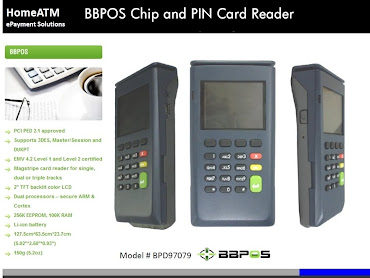 Payment vendor woos e-retailers with promise of lower transaction fees
Payment vendor woos e-retailers with promise of lower transaction fees
Online retailers consistently complain about the high fees they pay on credit card purchases, typically 2% for big e-retailers and considerably more for smaller ones. Start-up HomeATM ePayment Solutions says it has a way to reduce those fees significantly, although some payment experts, as always, are skeptical.
HomeATM has developed a small magnetic stripe reader with a personal identification number, or PIN, pad that can be plugged into a personal computer. That would enable a consumer to swipe his debit card and enter his PIN, just as he would at an ATM or at store checkout counter, sending the transaction through the debit networks that typically charge lower fees than credit card networks, according to Mitchell Cobrin, chief operating officer.
While PIN debit interchange varies with the network and type of merchant, it typically ranges from 40 cents to $2 per transaction, and in some cases is a flat fee, as opposed to a percentage of the purchase amount, as with credit card transactions. Merchants will be able to save 1% to 2% per transaction in many cases, Cobrin says.
His hope is that large online merchants will give the readers to loyal customers. He says the readers cost about $5, and that merchants will soon make back that investment if repeat customers pay with PIN debit cards instead of credit cards. “The financial metrics become compelling for a retailer like Amazon, Wal-Mart or Costco to give away these devices for free and incent the consumers to use it, because they’ll save money every time,” Cobrin says. He notes, however, that it often takes a long time to convince such large retailers to adopt a new payment method.
HomeATM has also come up with a way to use the PIN-entry devices with credit cards for consumers who prefer that method of payment. This system, called PinMyCard, would require a one-time registration by the consumer who would swipe his debit card and enter his PIN to verify his identity. He would then choose a credit card PIN for use with subsequent purchases. Cobrin says that could lead to merchants being charged card-present rates that are lower than the card-not-present rates e-retailers typically are charged.
There are about 5,500 of the HomeATM devices in the field and a handful of merchants accepting transactions, although Cobrin did not name them. The company has announced a deal with Universal Air Travel Plan Inc., a Washington, DC-based payment network owned by airlines from several countries, to offer the HomeATM device to member airlines.
Universal Air Travel Plan continues to expand its partnerships into alternative forms of payment with HomeATM, utilizing UATP`s existing connections with the airlines to offer a new form of payment option for consumer use," Ralph Kaiser president and CEO of UATP, said in announcing the agreement last month.
While the lower interchange of PIN-debit networks may seem appealing, merchants may not find HomeATM saves them much when all costs are considered, says Jay DeWitt of consulting firm Glenbrook Partners. Even if the device costs only $5, it will cost at least another $5 to send it out and support it, bringing the cost to $10 or more. And then merchants will have to persuade customers to use it. “Are there going to be enough customers doing enough transactions so that the interchange differential is going to be enough to pay for distributing and supporting those readers?” DeWitt asks.
As for PinMyCard turning online purchases into card-present transactions, DeWitt says it will be up to credit card networks like Visa and MasterCard to decide whether they accept that logic.
All Top Banking
Powered by Blogger.









0 comments